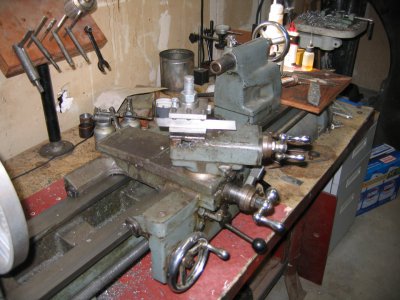- Joined
- Oct 31, 2016
- Messages
- 2,643
Jeff sorry for the late reply to your post about a parting blade holder that holds the blade horizontal. I made one for my QCTP. I followed videos from Winky's Workshop adapted for my Norman style QCTP.

For maximum rigidity you want the holder to sit on the compound. My blade came with the rake. The main problem occurs when you regrind the blade the tip is no longer on center line. This requires a shim to bring it back up to center line.

For maximum rigidity you want the holder to sit on the compound. My blade came with the rake. The main problem occurs when you regrind the blade the tip is no longer on center line. This requires a shim to bring it back up to center line.

